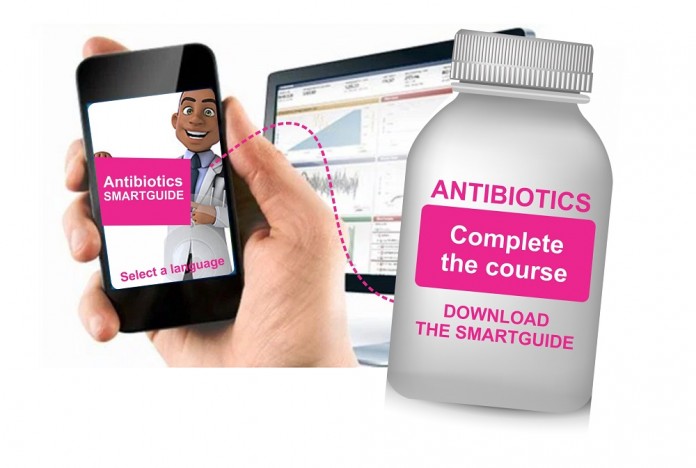Abstract:
Combating infectious diseases takes a community effort. However, one of the most important messages that the public often hears, but doesn’t understand is “Complete the Course.” Following a car accident, I share my recovery process, and the speed bumps caused by Methicillin-Resistant Staphylococcus aureus (MRSA).
Main Article:
In 2004, when I was 25 years old, I was in a car accident that caused me to incur severe injuries. My abdominal area, pelvic area, back, and neck were hurt badly and I was put on life support. It took a long time for me to recover, however the damage that took the longest to recover from was facial. I had smashed my cheekbone (zygoma), my orbital floor, and broke my jaw and my nose. I had severe lacerations through my face and lost my eye. They salvaged what they could of the bone left in my face at a public hospital in Johannesburg. However, I was nowhere near what I used to look like and I had to find all sorts of ways to hide my disfigurements as the public did not seem to react very well to them. The emphasis goes towards the choice of words because in the past, words such as ‘disfigured’ were similar such as ‘deformed’ or ‘freaks’. Therefore, some patients formed ‘facial difference’ groups on social media to ask the medical realm and government to review these terms globally–especially for children.
During the 5 years after my accident, I traveled back and forward to different specialists for surgeries to try and recover some of my facial symmetry. For most of those years, I chose to wear dark-tinted glasses. Towards the 5th year, I could see my cheekbone and eye level dropping. I already had 3 prosthetic implanted successfully. An orbital floor made from MEDPOR®, an artificial eye, and an orbital silicone implant. I felt it was time to investigate a fourth implant to build the cheekbone up again because it was very flat, In addition, the eyelid was pulling down, a condition called ectropion.

I visited a maxillofacial surgeon and a plastic surgeon. The maxillofacial surgeon felt an implant was necessary but no plastic work would need to be done. He had a 3D model printed, and an alloplastic implant made to that specification and implanted it. A few weeks later, the ectropion got worse with adhesions, and the wound was releasing some discharge. The physicians debated whether or not it was an infection in my sinuses, and I was prescribed the antibiotic methicillin for at least 10 days. I was told to take my medication 3 times daily. I was not prescribed any other antibiotics during this time.

My next emergency surgery was to clean out my sinuses, straighten my septum, debride the implant, and replace the skin tissue with a local flap. I was put on another course of methicillin. The discharge and adhesions appeared again 2 weeks later. I found myself visiting the hospital pharmacy weekly for boxes of white sterile eye pads, gloves, soap, and alcohol, in order to wash the wound at home because the infection would not go away. The skin became red and extremely dry. Slowly, the infection spread, and got worse with each day. It was a devastating time for me and I had no idea what to do.
After so much angst while struggling with the infection, I finally received a proper diagnosis after further testing was done. Something made me think to ask the offices for the results of my tests. The results said MRSA (methicillin-resistant Staphylococcus aureus). I did not worry much because I did not know much about infections and how serious this diagnosis was. The doctor said he had to treat it immediately, as its effects could be lethal. When I started to read articles on PubMed and the web, I was lost as to what all of the information meant. Many questions went through my mind. In South Africa, many doctors prescribe antibiotics after asking you on the telephone how you feel, or how your child looks to you, if you are not able to go see them in person. If your symptoms resemble those of an infection, you get a prescription for antibiotics, which can be picked up at a pharmacy.
When I was growing up, antibiotics seemed harmless to me. There were times I felt fine after taking them for only a few days and so, like most patients, I stopped taking the antibiotics at that point. If my memory serves me, most of the boxes of the prescribed antibiotics had a pink luminous sticker with ‘COMPLETE THE COURSE” on them, but my pharmacists did not educate me on what this meant. I have seen some hospital initiatives that display posters about antibiotic use to the public in the form of comic strips. However, the messages were often uninformative in terms of not explaining why you should ‘complete the course’ of antibiotics or why you must take each dose on time.
I lost 3 years of my life trying to fix the damage caused by infections. I now know that antibiotic-resistant bacteria are already here, but we could minimize the damage that they cause through proper education of how to use antibiotics correctly. Always complete the course.
Article Revised: November 16, 2015: Feature image changed
















Methicillin is no longer used in patients.
[…] Read her story: The “Fatal Warning” Antibiotics Don’t Have […]